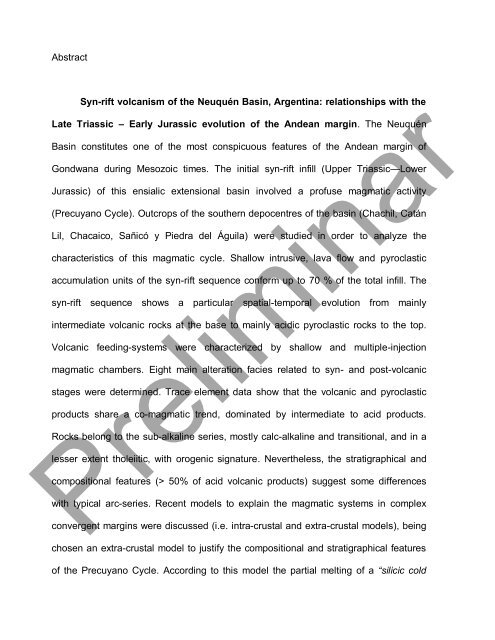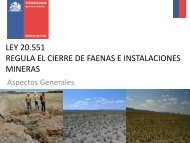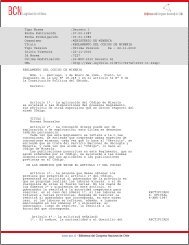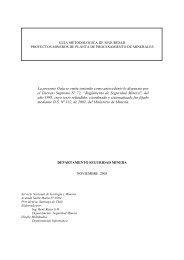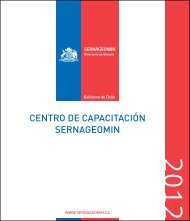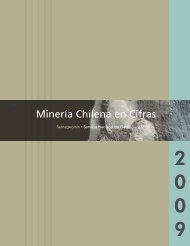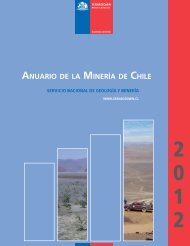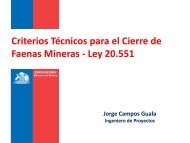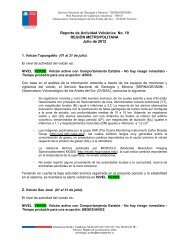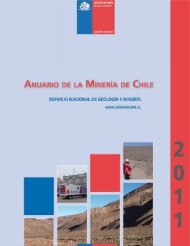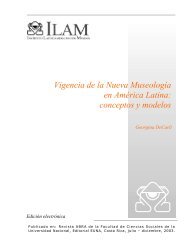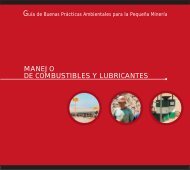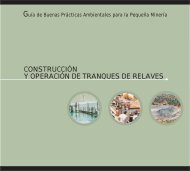Syn-rift volcanism of the Neuquén Basin, Argentina ... - Sernageomin
Syn-rift volcanism of the Neuquén Basin, Argentina ... - Sernageomin
Syn-rift volcanism of the Neuquén Basin, Argentina ... - Sernageomin
Create successful ePaper yourself
Turn your PDF publications into a flip-book with our unique Google optimized e-Paper software.
Abstract<br />
<strong>Syn</strong>-<strong>rift</strong> <strong>volcanism</strong> <strong>of</strong> <strong>the</strong> <strong>Neuquén</strong> <strong>Basin</strong>, <strong>Argentina</strong>: relationships with <strong>the</strong><br />
Late Triassic – Early Jurassic evolution <strong>of</strong> <strong>the</strong> Andean margin. The <strong>Neuquén</strong><br />
<strong>Basin</strong> constitutes one <strong>of</strong> <strong>the</strong> most conspicuous features <strong>of</strong> <strong>the</strong> Andean margin <strong>of</strong><br />
Gondwana during Mesozoic times. The initial syn-<strong>rift</strong> infill (Upper Triassic—Lower<br />
Jurassic) <strong>of</strong> this ensialic extensional basin involved a pr<strong>of</strong>use magmatic activity<br />
(Precuyano Cycle). Outcrops <strong>of</strong> <strong>the</strong> sou<strong>the</strong>rn depocentres <strong>of</strong> <strong>the</strong> basin (Chachil, Catán<br />
Lil, Chacaico, Sañicó y Piedra del Águila) were studied in order to analyze <strong>the</strong><br />
characteristics <strong>of</strong> this magmatic cycle. Shallow intrusive, lava flow and pyroclastic<br />
accumulation units <strong>of</strong> <strong>the</strong> syn-<strong>rift</strong> sequence conform up to 70 % <strong>of</strong> <strong>the</strong> total infill. The<br />
syn-<strong>rift</strong> sequence shows a particular spatial-temporal evolution from mainly<br />
intermediate volcanic rocks at <strong>the</strong> base to mainly acidic pyroclastic rocks to <strong>the</strong> top.<br />
Volcanic feeding-systems were characterized by shallow and multiple-injection<br />
magmatic chambers. Eight main alteration facies related to syn- and post-volcanic<br />
stages were determined. Trace element data show that <strong>the</strong> volcanic and pyroclastic<br />
products share a co-magmatic trend, dominated by intermediate to acid products.<br />
Rocks belong to <strong>the</strong> sub-alkaline series, mostly calc-alkaline and transitional, and in a<br />
lesser extent tholeiitic, with orogenic signature. Never<strong>the</strong>less, <strong>the</strong> stratigraphical and<br />
Preliminar<br />
compositional features (> 50% <strong>of</strong> acid volcanic products) suggest some differences<br />
with typical arc-series. Recent models to explain <strong>the</strong> magmatic systems in complex<br />
convergent margins were discussed (i.e. intra-crustal and extra-crustal models), being<br />
chosen an extra-crustal model to justify <strong>the</strong> compositional and stratigraphical features<br />
<strong>of</strong> <strong>the</strong> Precuyano Cycle. According to this model <strong>the</strong> partial melting <strong>of</strong> a “silicic cold


